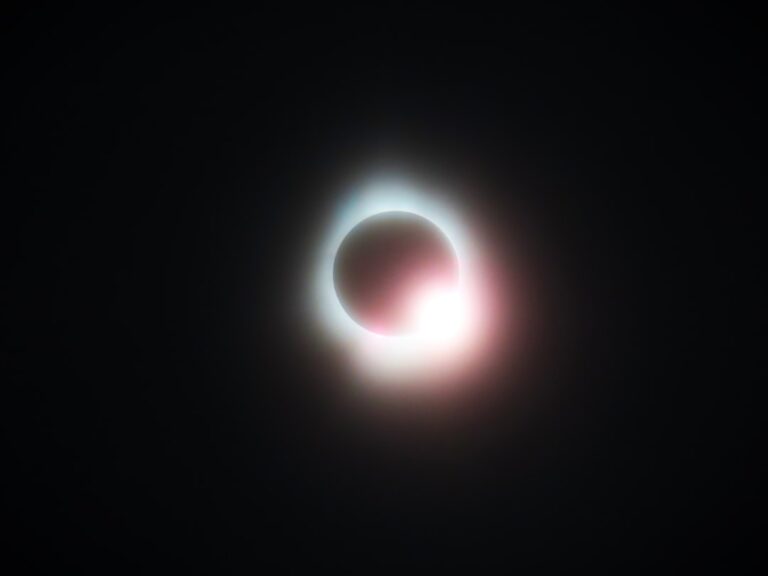Elliptical galaxies represent one of the three primary classifications of galaxies, alongside spiral and irregular galaxies. Characterized by their smooth, featureless light profiles and ellipsoidal shapes, these galaxies exhibit a wide range of sizes, from dwarf ellipticals containing only a few billion stars to massive giants housing trillions. The absence of significant structure, such as spiral arms or prominent dust lanes, distinguishes elliptical galaxies from their spiral counterparts.
This lack of structure is indicative of their stellar populations, which are predominantly older stars, leading to a more uniform appearance. The study of elliptical galaxies is crucial for understanding the broader dynamics of the universe. They are often found in dense environments, such as galaxy clusters, where their interactions with other galaxies can significantly influence their evolution.
The formation and characteristics of elliptical galaxies provide insights into the processes that govern galaxy formation and the role these massive structures play in the cosmic web. As researchers delve deeper into the nature of elliptical galaxies, they uncover not only the history of these celestial bodies but also the fundamental principles that govern the universe itself.
Key Takeaways
- Elliptical galaxies are one of the three main types of galaxies, characterized by their smooth, featureless appearance and lack of spiral arms.
- Elliptical galaxies are believed to form through the merger of smaller galaxies, resulting in a spheroidal shape and old stellar population.
- Elliptical galaxies are typically composed of older stars with little ongoing star formation, and they often contain a large amount of dark matter.
- Elliptical galaxies play a crucial role in the universe by contributing to the overall mass and structure of galaxy clusters, and they are also involved in the process of galaxy evolution.
- Observing and studying elliptical galaxies can provide valuable insights into the formation and evolution of galaxies, as well as the distribution of dark matter in the universe.
Formation and Evolution of Elliptical Galaxies
The formation of elliptical galaxies is a complex process that has intrigued astronomers for decades. One prevailing theory suggests that they form through the merger of smaller galaxies. When two or more spiral galaxies collide, their gravitational interactions can lead to a chaotic mixing of stars and gas, ultimately resulting in a more spheroidal shape.
This merger process can strip away the distinct features of the original galaxies, leading to the smooth profiles characteristic of ellipticals. The energy released during such collisions can also trigger bursts of star formation, although this is often short-lived compared to the overall lifespan of the galaxy. Another significant aspect of elliptical galaxy evolution is their gradual transformation over time.
Consequently, elliptical galaxies often become dominated by older, red stars, leading to a redder appearance in their spectra. This phenomenon is known as “passive evolution,” where the galaxy’s star formation rate declines significantly.
Over billions of years, this process can result in a population that is largely composed of low-mass stars, which have longer lifespans than their more massive counterparts.
Characteristics and Properties of Elliptical Galaxies

Elliptical galaxies exhibit a range of characteristics that set them apart from other galaxy types. Their shapes can vary from nearly spherical to elongated ellipsoids, with the degree of flattening often referred to as the “ellipticity.” This variation in shape is influenced by factors such as the galaxy’s mass and its environment. In general, larger elliptical galaxies tend to be more spherical, while smaller ones may display more pronounced elongation.
In terms of stellar populations, elliptical galaxies are predominantly composed of older stars, which contributes to their reddish hue. The stellar density within these galaxies is also notably high, particularly in their central regions. This high density can lead to complex dynamical interactions among stars, resulting in phenomena such as stellar collisions and the formation of globular clusters.
Additionally, elliptical galaxies often contain supermassive black holes at their centers, with masses that can reach billions of solar masses. The presence of these black holes is thought to be linked to the formation and evolution of the galaxy itself.
The Role of Elliptical Galaxies in the Universe
| Metrics | Data |
|---|---|
| Number of Elliptical Galaxies | Thousands to Millions |
| Mass of Elliptical Galaxies | Billions to Trillions of Solar Masses |
| Size of Elliptical Galaxies | From 3,000 to 700,000 Light Years in Diameter |
| Stellar Population | Primarily Old Stars |
| Role in Galaxy Evolution | Important in Early Universe, Mergers, and Star Formation |
Elliptical galaxies play a significant role in the cosmic landscape, particularly in dense environments like galaxy clusters. They are often among the most massive members of these clusters and can influence the dynamics and evolution of surrounding galaxies through gravitational interactions. Their presence can affect star formation rates in nearby spiral galaxies by stripping away gas or altering orbital dynamics.
Moreover, elliptical galaxies serve as important laboratories for studying dark matter and galaxy formation theories. Their mass distribution can be inferred from gravitational lensing effects, providing insights into the unseen mass that permeates the universe. The study of elliptical galaxies also sheds light on the processes that govern galaxy mergers and interactions, which are fundamental to understanding how structures in the universe evolve over time.
Observing and Studying Elliptical Galaxies
The observation and study of elliptical galaxies have been greatly enhanced by advancements in astronomical technology. Ground-based telescopes equipped with adaptive optics allow astronomers to obtain high-resolution images that reveal intricate details about these galaxies’ structures and stellar populations. Space-based observatories like the Hubble Space Telescope have also provided invaluable data on elliptical galaxies, enabling researchers to explore their morphology and dynamics without atmospheric interference.
By analyzing the light emitted from these galaxies, astronomers can determine their chemical composition, velocity distributions, and star formation histories. This information helps build a comprehensive picture of how elliptical galaxies evolve over time and interact with their environments.
Additionally, surveys such as the Sloan Digital Sky Survey (SDSS) have cataloged thousands of elliptical galaxies, providing a wealth of data for statistical studies and comparative analyses.
Theories and Models Explaining Elliptical Galaxies

Several theories and models have been proposed to explain the formation and evolution of elliptical galaxies. One prominent model is the hierarchical merging scenario, which posits that smaller structures merge over time to form larger ones. This model aligns with observations indicating that many massive elliptical galaxies are located at the centers of galaxy clusters, suggesting a history of mergers and accretion.
Another important framework is the “dry merger” scenario, which emphasizes that many elliptical galaxies form through mergers that involve little gas. In this context, two gas-poor spiral galaxies might collide and merge without significant star formation occurring during the process. This model accounts for the observed properties of many elliptical galaxies, particularly their older stellar populations and lack of ongoing star formation.
Unanswered Questions and Current Research on Elliptical Galaxies
Despite significant advancements in our understanding of elliptical galaxies, numerous questions remain unanswered. One major area of inquiry revolves around the precise mechanisms driving their formation and evolution. While merger scenarios provide a compelling explanation for many observed properties, researchers continue to investigate how environmental factors influence these processes.
Another critical question pertains to the role of dark matter in shaping elliptical galaxies. While it is widely accepted that dark matter constitutes a significant portion of a galaxy’s mass, its exact distribution within elliptical galaxies remains uncertain. Understanding how dark matter interacts with baryonic matter during galaxy formation could provide crucial insights into both galaxy evolution and cosmology as a whole.
Current research efforts are increasingly focused on utilizing advanced simulations and observational data to address these questions. By combining theoretical models with empirical evidence from large-scale surveys, astronomers aim to refine our understanding of how elliptical galaxies fit into the broader context of cosmic evolution.
The Future of Understanding Elliptical Galaxies
As technology continues to advance, our ability to study elliptical galaxies will only improve. Upcoming space missions like the James Webb Space Telescope (JWST) promise to revolutionize our understanding by providing unprecedented views into distant elliptical galaxies and their formation histories. With its ability to observe in infrared wavelengths, JWST will enable astronomers to peer through dust clouds and study star formation processes that were previously obscured.
Moreover, ongoing developments in computational astrophysics will allow for more sophisticated simulations that incorporate various physical processes influencing galaxy evolution. These simulations will help bridge gaps between theoretical predictions and observational data, leading to a more cohesive understanding of how elliptical galaxies form and evolve over cosmic time. In summary, while significant progress has been made in understanding elliptical galaxies, many mysteries remain.
As researchers continue to explore these enigmatic structures through innovative observational techniques and theoretical models, we can anticipate a deeper comprehension of not only elliptical galaxies themselves but also their role within the vast tapestry of the universe.
While exploring the vast and intriguing universe of elliptical galaxies, one might find it interesting to draw parallels with philosophical concepts that challenge traditional ideas and embrace new perspectives. For instance, Jean-Paul Sartre’s existentialist notion that “existence precedes essence” offers a thought-provoking lens through which to view the formation and evolution of these galaxies. Just as Sartre’s philosophy encourages a reevaluation of individual freedom and identity, the study of elliptical galaxies invites us to reconsider our understanding of cosmic structures and their origins. For a deeper dive into Sartre’s revolutionary ideas, you can read more in the article titled “Sartre’s Concept of Existence Preceding Essence: Challenging Traditional Philosophical Ideas and Embracing Individual Freedom” available at this link.





















+ There are no comments
Add yours